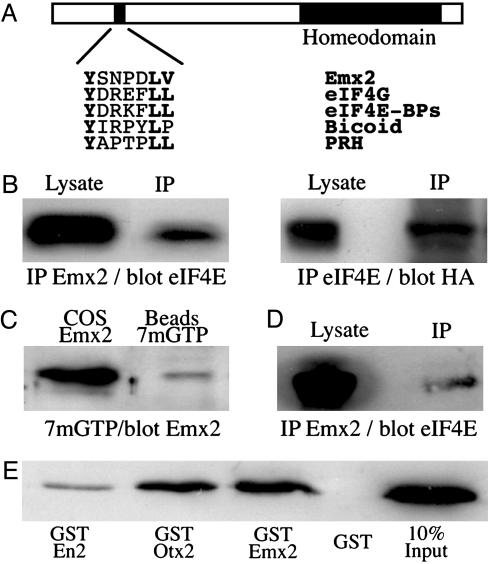Fig. 4.
Emx2 directly interacts with eIF4E in vivo and in vitro. (A) Schematic representation of the Emx2 protein, with its homeodomain and its putative eIF4E-binding site, and comparison of the known consensus eIFE4-binding motifs in eIF4G, eIF4E-BPs, Bicoid, and PRH with the putative motif in Emx2. (B) Cytosolic extracts from COS-7 cells transfected with HA-Emx2 were immunoprecipitated with anti-Emx2 (Left) or anti-eIF4E (Right) antibodies. Five percent of total extract (Lysate) and total beads (IP) were analyzed by Western blotting for the presence of eIF4E or HA-Emx2. (C) Cytosolic extracts from olfactory mucosa were incubated with 7 methyl GTP-Sepharose beads. Emx2 expressed in COS-7 (COS Emx2) was used as a positive control size marker. eIF4E (Fig. 7) and Emx2 were retrieved on the beads. (D) Cytosolic extracts from olfactory bulb were immunoprecipitated with the anti-Emx2 antibody. Cell extracts (5% of total extract was loaded; Lysate) and beads (IP) were analyzed by Western blotting for the presence of eIF4E. eIF4E was coimmunoprecipitated with Emx2. (E) Purified recombinant eIF4E was incubated with equal amounts of recombinant GST, GST-Emx2, GST-Otx2, or GST-Engrailed2. The anti-eIF4E Western blot shows that all but GST are specifically retained by eIF4E. Ten percent of input was loaded as a positive control size marker.

